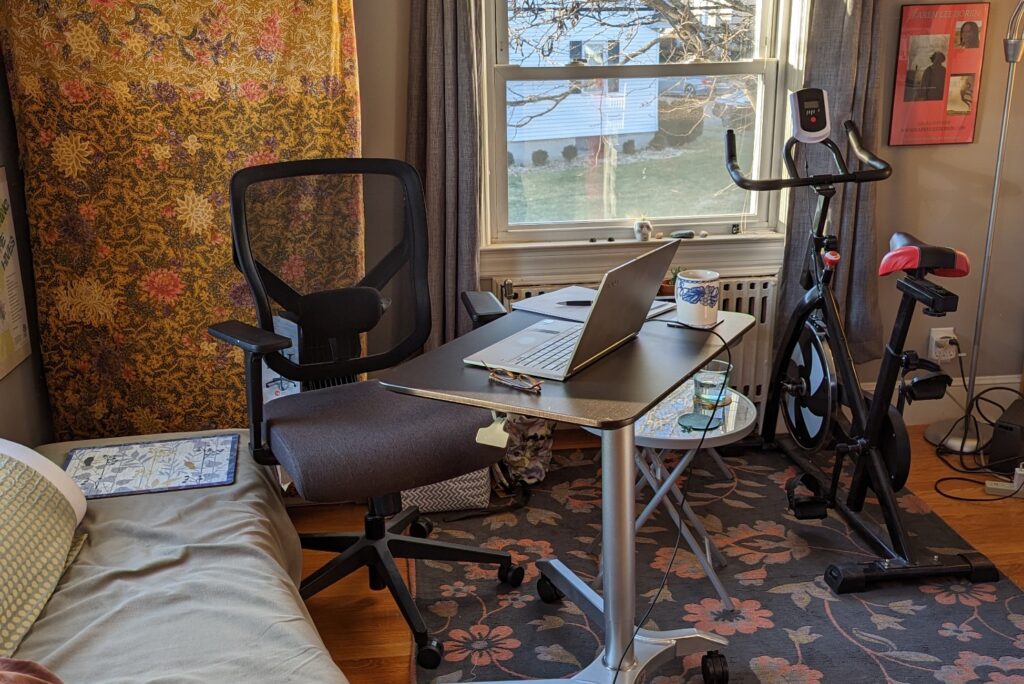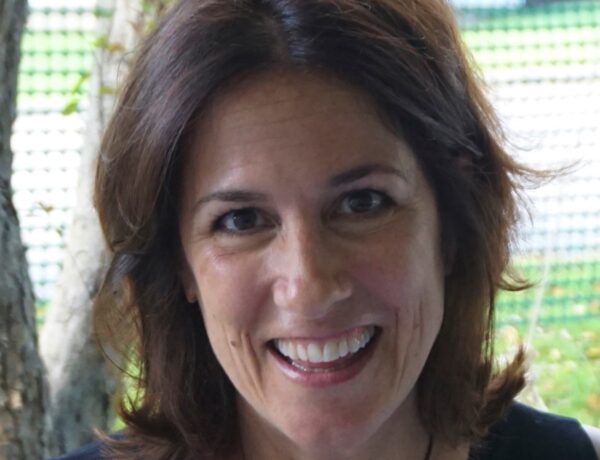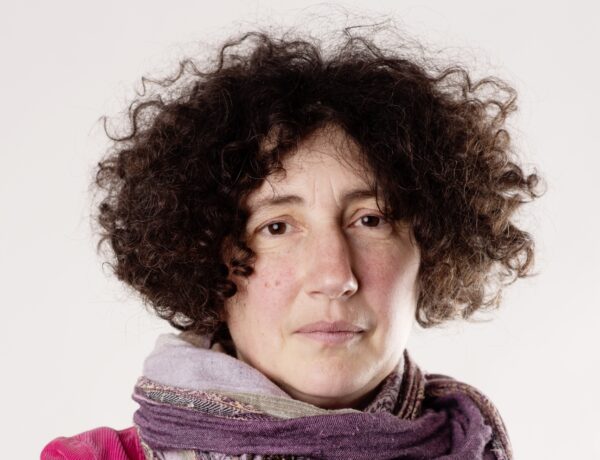Karen Lee Boren writes fiction and nonfiction. Her novel, Girls in Peril, was the premier publication for the Tin House New Voices series and a Barnes and Noble Discover selection.
Her novel, Month of Fire, was a finalist for the New American Press book contest, and her story collection, Mother Tongue was published by New Rivers Press in 2015. She has been nominated for a Pushcart Prize and is the winner of the 2018 Wundor Editions Fiction Prize. Her latest novel, Secret Waltz, was published by Flexible Press in 2022.
Her writing appears in the Santa Fe Writers Project, Flexible Persona, WomenArts Journal, The Florida Review, New South, Hawaiˊi Pacific Review, Epoch, Cream City Review, The American Journal of Poetry, Crack the Spine, The Offbeat, BookForum, Fourth Genre, Litro, Lonely Planet’s anthology Rites of Passage: Backpacking ‘Round Europe, and The Best of Lonely Planet’s Travel Writing.
She’s earned a Ph.D from the University of Wisconsin and an MFA from Wichita State University. She is a full professor of English and creative writing at Rhode Island College.
Each week, we publish a new daily writing routine from a famous author. Subscribe to our newsletter so you don’t miss out!
Hi Karen, welcome to Famous Writing Routines, we’re so glad to have you here with us today! Can you tell us a little bit about your latest novel, Secret Waltz, and what inspired you to write it?
Thank you so much. I’m delighted to talk about writing with you. My new novel, Secret Waltz, is set in Milwaukee in 1966. It focuses on three young people, Sonya, Leo, and Emelia, who have their lives upended by secrets that threaten disastrous consequences. Sonya’s hard-earned science scholarship, the first ever awarded to a girl, is threatened.
Newly-revealed family secrets force Emelia to re-evaluate everything she thought she knew about herself and her family. Meanwhile, Leo struggles with a complex and abusive relationship with his father, a musician who Leo both looks up to and hates for the control he has over Leo’s music and his life.
Each character has a secret to keep and a secret to uncover until Sonya’s seemingly inexplicable and horrifyingly desperate act to save her future forces them all to decide what matters most, finally leaving readers with a secret they too are forced to keep. While the book sounds serious, there is a lot of music and fun and friendship in it too.
As far as what inspired the book, I really wanted to explore how secrets can impact the decisions we make, especially early in life. I’m also really interested in the intricacies of friendship and family.
What did your creative process for the book look like, from coming up with an idea to the final draft?
It was a long process, seven years. I originally wrote these characters in their thirties, set in the eighties. But this backstory kept coming up and calling my attention away from the forward movement of the later story. So finally, I stopped trying to ignore it and said, “Okay, let’s see what’s going on here.”
The issues of the past were so unresolved, I had to figure them out. The good thing about this circuitous process is that I was able to write the story of these young people while knowing what happens to them later in life. Maybe I’ll write that novel too.
Your novel Girls in Peril was the premier publication for the Tin House New Voices series and a Barnes and Noble Discover selection. How did it feel to have your work recognized in such a big way and how do you think it impacted on your writing career?
It’s always wonderful to have my writing recognized, but more than that, any type of acknowledgement means more people will read my writing, and that’s really the best part of any recognition for me. This is especially true because I publish with smaller presses, and getting attention for small-press books is always a challenge. The more folks read my work, the more I’m spurred on to jump into the next project, to keep going to my writing space each morning and slogging it out with the characters and the craft.
Your writing appears in a variety of literary publications such as The Florida Review, New South, and Hawai’i Pacific Review. How do you approach submitting your work to different literary magazines and journals?
Well, it depends on the journal. On occasion a publisher will come to me and request something. But usually, I write something and finish it. Then I try to match it to a publication that seems appropriate due to subject matter, style, or their current needs. For example Crack the Spine had a special themed issue on routine, and I thought my story “Cross Hairs” was a good fit, and luckily so did they. This is true for the fiction and literary nonfiction I write. The writing generally comes first.
As a full professor of English and creative writing at Rhode Island College, how do you balance teaching and writing, and what do you enjoy most about each?
I love teaching, and I love teaching writing. It never bores me. To me, writing fiction is the most challenging writing, and teaching has allowed me to explore craft nearly every day of my life. I talk about it with students. They know I’m facing the same writing challenges they are. So teaching and writing don’t contradict each other. They mesh for me.
That said, teaching takes time, and sometimes I have to set writing aside to focus on my students. That said, the financial security I’m privileged to have has allowed me to write more freely. I choose writing projects because they compel me, because they’re artistically challenging, or because they’re fun. Teaching has also allowed me to publish with small presses, which I love.
What do I love most about writing? Well, it’s just so interesting. I get to research things that I would have no other reason to research. I get to see how craft and language work together. I get to meet these characters that I often fall madly in love with, and it pains me to see them make the tough, often really terrible choices, but they must for the fiction to work. It’s just a privilege to get to do this work.
Discover the daily writing habits of authors like Stephen King, Neil Gaiman, and Gillian Flynn with Famous Writing Routines Vol. 1 and learn how to take your writing to the next level. Grab your copy today!
What does a typical writing day look like for you?
I write early in the morning when I’m fresh. In the summer, I write anywhere between two and six hours at a stretch unless I’m really focusing on a revision and maybe I’ve gone on a retreat especially to work. I’ve taught enough to respect any writer’s routine, but for me, I really need to show up consistently to get work done. If I show up, at least I’ve given myself the chance to write something I like. Oh, and coffee. And a version of quiet, these days with headphones and ambient ocean sounds.
Can you share any tips or tricks you have for overcoming writer’s block?
Sure. If you’re having trouble writing, set a short timer for, like, ten minutes, five even. Then begin with a sensory image – sudden rain on a hot day – and start writing about it until the timer dings. Stick with sensory images, even the less-used ones, taste and texture. When the timer dings, circle back to what you wrote, find a new image in it, and set the timer again. Go in a totally different direction. I call this, chasing the image.
Here’s another one: Describe any scene you know well, real or fantasy. Once you have a good description, put in an object that should not be there – a gun on the slide of a children’s playground, a clown on a raft in the ocean, something totally weird. Then put a character in the scene and make them interact with the inappropriate object. I call this, appropriately, the inappropriate object exercise.
If you could have a conversation with any author throughout history about their writing routine and creative process who would that person be?
Virginia Woolf, hands down. Although I worry she’d hate me, think me too pedestrian. I’d also love to have talked to Toni Morrison about Virginia Woolf. Not a lot of folks know that Toni Morrison wrote her master’s thesis on Virginia Woolf. Of course, then I’d want to talk to Toni Morrison about her process. I’ve taught far more Toni Morrison than I have Virginia Woolf, and I have some great craft questions for Toni Morrison.
I’d love to know about some of the books you’re reading at the moment. What have been some of your favorite reads?
Dionne Irving’s short story collection, The Islands, is amazing! Read it, everyone. I’ve been reading a fantastically-interesting collaborative writing project called Don’t Break My Rice Bowl, which is the “found” manuscript brought to its finished state by relatives of the primary author, Robert Dodd. I also reread Elizabeth Bowen’s Death of the Heart over my semester break because I love the language.
What does your current writing space look like?
It’s messy, because it’s also my clothes closet, but it’s getting better now that I’ve taken my teaching materials from the pandemic back to my college office. I move around a lot, so there’s a writing couch, a pneumatic writing table that I can stand or sit at and move at will.
I have a few writing talismans, rocks and some sculpted seal heads. I love the light in my space, which is morning light. Perfect for a morning writer. I’m really lucky to have this space, and this room of my own that, I believe, Virginia Woolf would approve of.

Affiliate disclaimer: Some links on this website are affiliate links. We may earn a small commission if you make a purchase through these links, but only promote products we truly believe in. We disclose affiliate links and give honest reviews.



No Comments